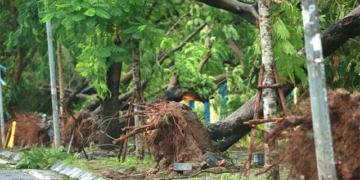Nuclear energy is an incredibly powerful force, once considered a “game changer,” but what are the associated risks and consequences?
Nuclear fission is the process of splitting the nucleus of an atom to produce two (or more) lighter elements.
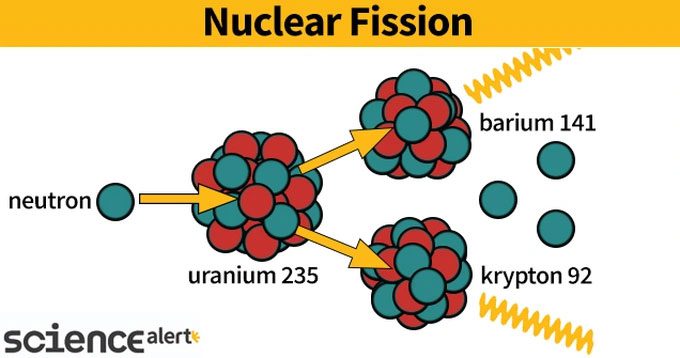
The nuclear fission process. (Image: Sciencealert).
Although this process can sometimes occur spontaneously in the isotopes of certain heavy elements like thorium and uranium, it typically only happens when a neutron collides with a nucleus with sufficient force.
This sudden accumulation destabilizes the cluster of protons and neutrons, making it prone to breaking apart, forming smaller nuclei known as fission products, and releasing more free neutrons, along with an explosion of high-energy photons in the form of gamma radiation.
The energy released from the splitting of these atomic particles has been harnessed by humans since the mid-20th century.
While this energy generation process does not emit greenhouse gases like fossil fuel combustion, the risks associated with heat-related meltdowns and long-term toxic waste, along with the extremely high costs of production and aftermath management, compel us to reconsider our use of this powerful energy source.
How is nuclear fission used to generate nuclear energy?
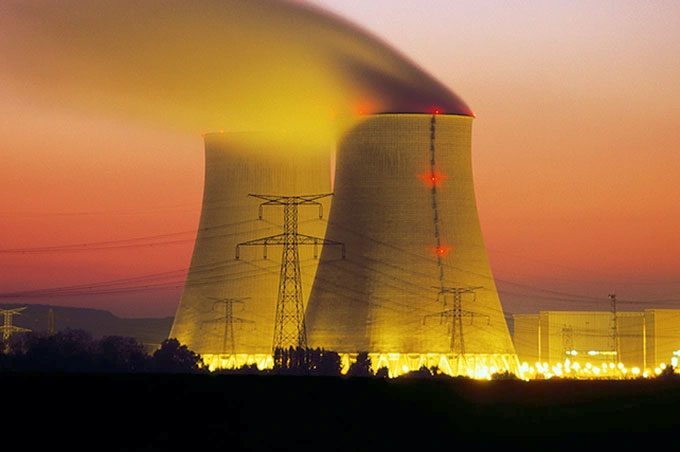
Cooling tower of a nuclear power plant in France. (Image: Getty Image).
Since the 1930s, scientists have conducted numerous experiments bombarding atoms with neutrons to determine the fission patterns of heavy elements like uranium that have the potential to generate tremendous energy.
Theoretically, uranium-235 has a much greater fission capability compared to other isotopes, particularly when neutrons collide with its nucleus while traveling at relatively slow speeds.
The additional neutrons released from the fission process can cause nearby U-235 atoms to undergo fission as well. For this chain reaction to occur, a relatively high density of U-235 must be compressed together, referred to as the critical mass of the material.
By the late 1930s, physicists had identified methods to slow neutrons down to a captureable level and enriched mixtures of uranium isotopes from natural sources to achieve the critical mass for U-235.
They also learned how to control the chain reaction to ensure that the exponentially generated neutrons remained manageable and did not result in an explosive reaction.
In the following decades, advancements in nuclear fission technology were applied in the production of various types of superweapons. It was not until after World War II that scientists began to focus on using nuclear fission to generate electricity.
Just as steam generated from fossil fuel boilers can turn electric turbines, steam from nuclear boilers is also used to generate electricity.
Technological advancements continue to enhance efficiency and safety levels. Today, there are approximately 440 operational nuclear power plants worldwide, producing about 10% of the world’s electricity.
In a climate where 60% of global electricity production comes from other resource sources that emit greenhouse gases at alarming rates, nuclear electricity generation represents a relatively cleaner solution.
However, there are substantial costs that compel us to reconsider transitioning more towards this energy source.
What issues accompany nuclear energy?
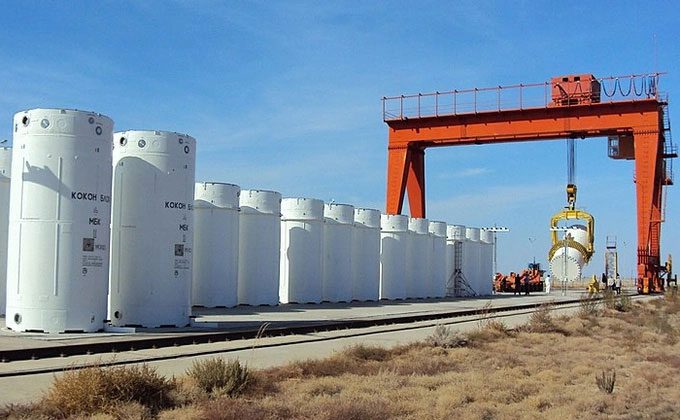
Cooling tower of a nuclear power plant in France. (Image: Getty Image).
The challenges of using nuclear energy lie in three areas: waste, risk, and cost.
Regarding waste, one of the greatest concerns in recent decades has been the level of emissions containing isotopes that may take thousands of years to decay to radiation levels comparable to those of the ores that produced those isotopes.
Currently, over 250,000 tons of high-level radioactive waste are being stored globally, awaiting treatment or reprocessing.
What makes it hazardous? Although nuclear waste, when stored properly, does not pose an immediate threat, ensuring long-term management is complex, and in the event of an accident, the handling becomes incredibly complicated, making it an unresolved issue.
On the risk front, the world witnessed a severe crisis following a technical accident at the Chernobyl nuclear power plant in Ukraine in 1986. The entire plant collapsed into ruins amid a radiation-contaminated area.
In 2011, the Fukushima nuclear reactor in Japan also failed after an earthquake. Although such catastrophic events do not occur frequently, estimates suggest crises like these could happen every 10 to 20 years, with the risk of radioactive spread extending thousands of kilometers around.
Not only is there a direct threat to health, but according to the World Health Organization, “the population evacuated from Fukushima also had to endure psychosocial and mental health impacts, broken social ties due to loss of homes and jobs, family relationships disrupted, and stigma from their surroundings.”
Regarding cost, researchers use the term “levelized cost of electricity” (LCOE) to compare electricity production costs. This cost can vary based on numerous factors related to location and resource fluctuations, but a relatively comparable assessment can be obtained globally.
According to the 2020 World Nuclear Industry Status Report, the LCOE for nuclear energy skyrocketed, increasing by 26% from 2009 to 2019, reaching $155 (approximately 3.6 million VND) per megawatt hour.
In contrast, coal dropped by 2% to $109 (approximately 2.5 million VND), solar electricity stood at just $41 (approximately 940,000 VND), and wind energy also decreased to levels comparable to solar.
Can nuclear power save the world?
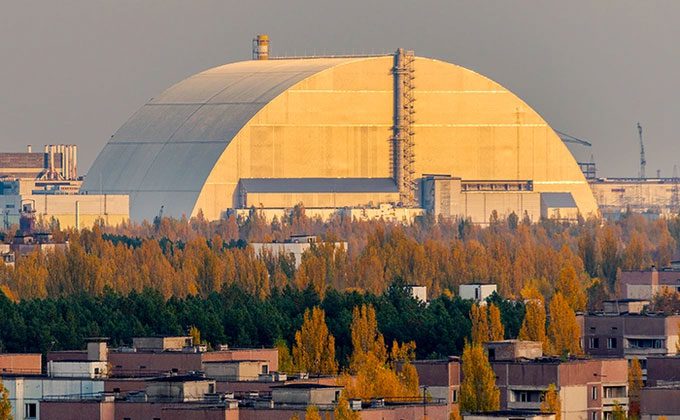
The remaining dome at Block 4 of the Chernobyl nuclear power plant. (Image: Getty Image).
Of course, new technologies can always make a difference. Finding better ways to store nuclear waste could enhance safety levels. Alternatives to uranium isotopes could alleviate concerns about leaks and the potential militarization of nuclear programs.
Alternative technologies can also impact the scale of reactors or even improve LCOE.
However, it seems to be too late. A comprehensive analysis of nuclear and renewable electricity production across more than 100 countries over the past 25 years found that nuclear power has not achieved the level of carbon emission reductions that renewable energy has been able to achieve.
Furthermore, investing in nuclear energy is a sunk cost that makes transitioning to renewable energy in the future even more challenging.
To be fair, nuclear energy is not without a place in the future. For example, using this energy source for space exploration is a significant advantage, and producing certain isotopes for medicine and research is an incredibly valuable field.
It may not save us from the climate crisis, but it can provide benefits that will accompany humanity for a long time to come.















































